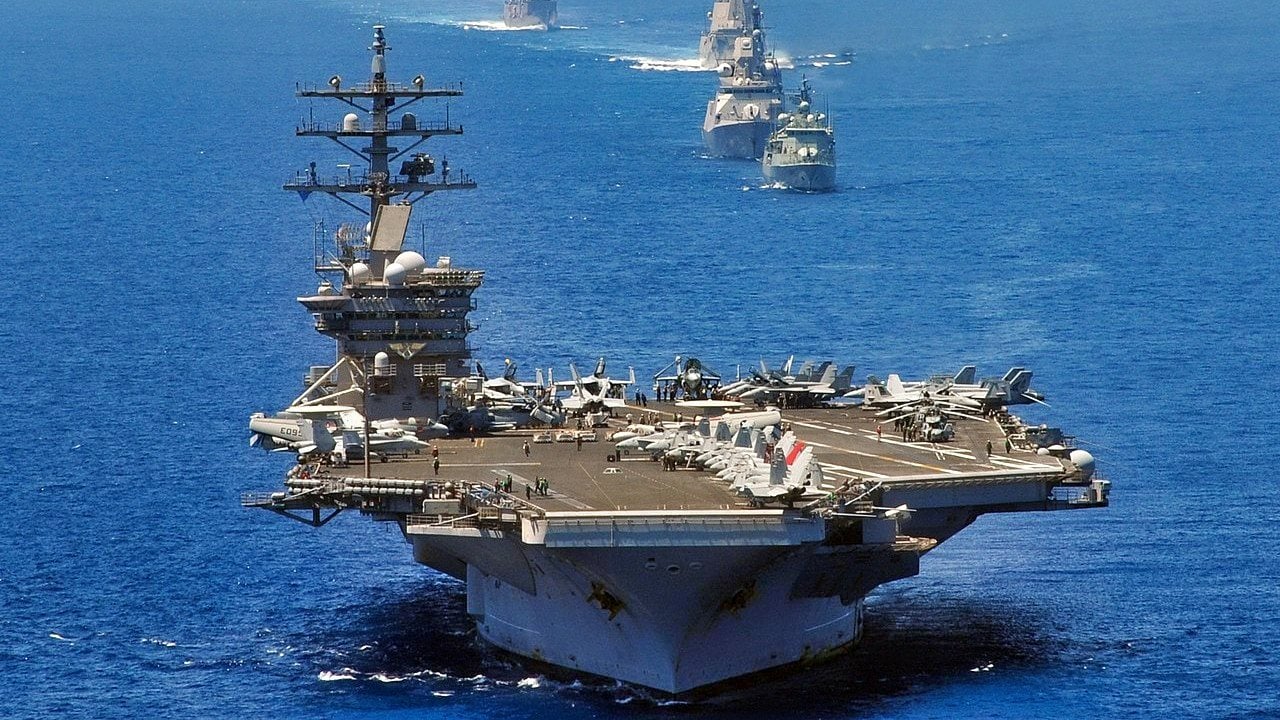Floating Coffins of Floating Airbases: Are Navy Aircraft Carriers Destined for Failure?
Aircraft carriers, once the cornerstone of U.S. naval dominance, face growing criticism due to their vulnerability to modern missile technology and the rising cost of maintenance.
What You Need to Know: Aircraft carriers, once the cornerstone of U.S. naval dominance, face growing criticism due to their vulnerability to modern missile technology and the rising cost of maintenance.

-Critics argue that anti-ship missiles and unmanned aerial vehicles, such as China's DF-21D, pose serious threats to these colossal vessels, suggesting carriers are becoming obsolete.
-However, while alternatives are being explored, such as the MQ-25 Stingray drone that extends jet range and keeps carriers further offshore, the U.S. Navy remains reliant on aircraft carriers like the new Ford-class ships. Until a viable replacement is developed, carriers will continue to play a central role.
Are Aircraft Carriers Becoming Obsolete? The Future of U.S. Naval Power
The ability to launch dozens of fighter jets at a moment’s notice from virtually anywhere on the oceans is undeniably important. But some analysts argue that the role of aircraft carriers is quickly declining. Critics claim these hefty ships are increasingly vulnerable to attack and extraordinarily expensive to build and maintain.
Geopolitical tensions are rising around the globe, and the possibility of a great power war in the future is very real. As U.S. adversaries build up their inventories of unmanned aerial vehicles and ship-killing missile arsenals, American carriers could be more susceptible to attacks. Opponents of the carrier urge finding an alternative. But while new technologies are on the horizon, the Navy does not yet have a solid alternative to aircraft carriers.

Challenged Supremacy for Aircraft Carriers
Since the Cold War, the U.S. military has enjoyed largely unchallenged supremacy in the seas. With far more aircraft carriers in service than any other nation, the U.S. can deploy military might in support of its interests at any time.
Recently, though, the threat arena has shifted, and great power competition is the new norm. Both China and Russia are working to develop hypersonic weapons programs that can evade the air-defense systems currently in use by the U.S. Beijing specifically claims that its DF-21D and DF-26 anti-ship missiles are warship killers. These advanced weapons are much cheaper and easier to replace than aircraft carriers.
In order to survive these new threats, analysts argue that carriers must change their approach. The development of the Boeing MQ-25 Stingray could help massive carriers like Nimitz-class ships stay out of the reach of China and Russia’s new anti-ship missiles.
This carrier-launched drone will be able to refuel fighter jets midair, extending their range. If carriers can remain farther from shore and out of range of these anti-ship missiles, they have a better chance of surviving a coordinated attack.
No Alternative on the Horizon for Aircraft Carriers
The Navy’s most modern aircraft carrier series is the Ford class.
Intended to replace the service’s existing Nimitz warships one by one, the new carriers will be fitted with cutting-edge technologies like the Electromagnetic Aircraft Launch System.
The lead ship of the class, the USS Gerald R. Ford, first deployed in 2021. An additional three carriers are planned to join the Ford in the seas over the next few years.
The lead ship of the class took longer than a decade to build and came with a staggering $13 billion price tag. Critics of the carrier worry that the price is too high if this ship can simply be destroyed by a missile or a drone when a war arrives.
While supposed aircraft carrier-killing weapons have become more readily available to U.S. adversaries and assorted non-state actors, the aircraft carrier is not totally defunct. Until the Navy develops a robust alternative, its fleet of floating airports will continue to sail.
About the Author: Maya Carlin
Maya Carlin, National Security Writer with The National Interest, is an analyst with the Center for Security Policy and a former Anna Sobol Levy Fellow at IDC Herzliya in Israel. She has by-lines in many publications, including The National Interest, Jerusalem Post, and Times of Israel. You can follow her on Twitter: @MayaCarlin.
All images are Creative Commons.


